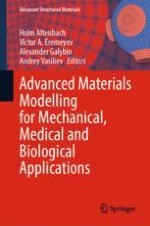2022 | Book
Advanced Materials Modelling for Mechanical, Medical and Biological Applications
Editors: Prof. Dr. Holm Altenbach, Prof. Dr. Victor A. Eremeyev, Prof. Alexander Galybin, Dr. Andrey Vasiliev
Publisher: Springer International Publishing
Book Series : Advanced Structured Materials
